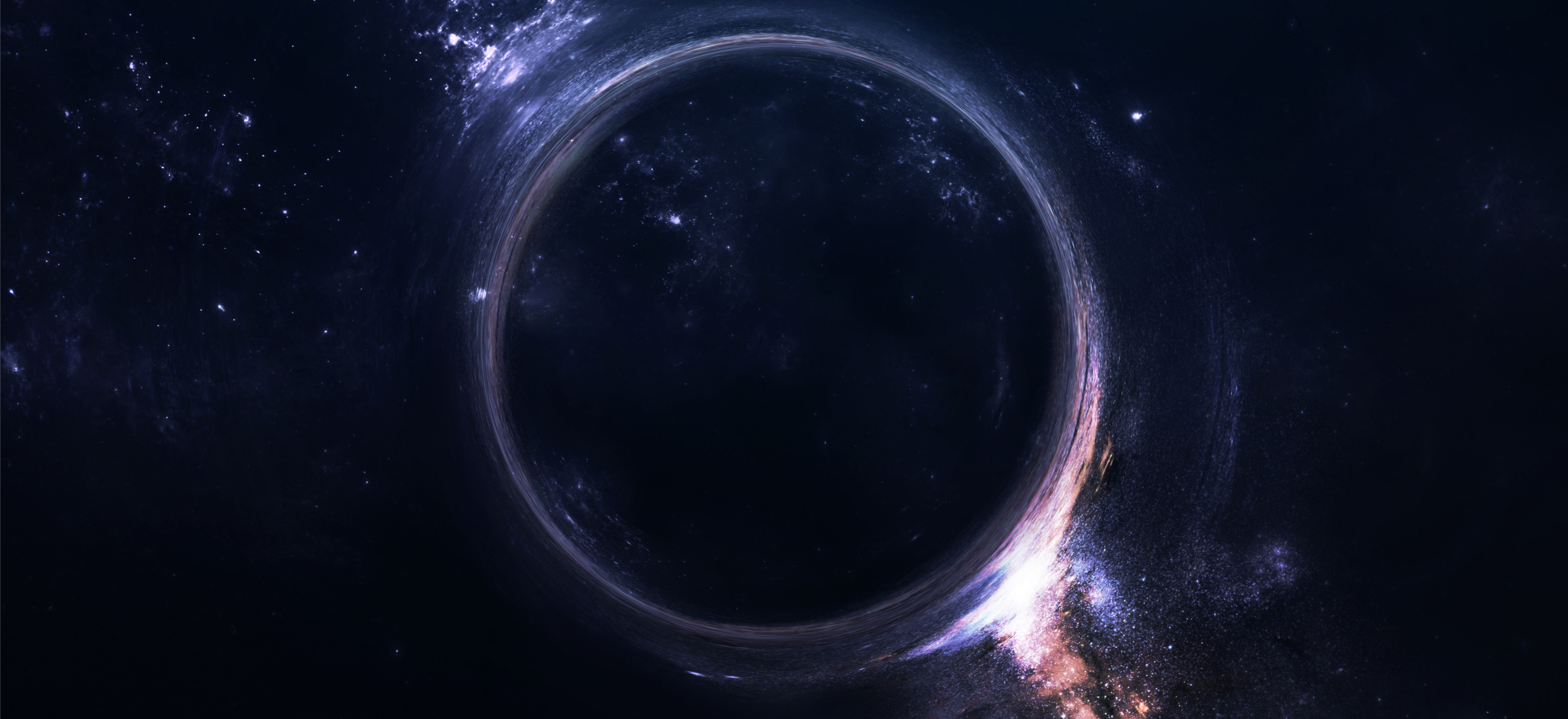A strange discovery has just been made in space. The thing observed is a “runaway” black hole. It has an unimaginable size of 20 million suns.
If we assume that the sun (inside which Earth can fit 330,000 times) were the size of a grain of sand, the black hole in question would be the size of an orange. In addition to this evocative fact, we must add that scientists also observed a whole stream of newly formed stars that the “runaway” black hole was dragging behind like a tail.
In addition to another reminder of just how tiny Earth is in the vastness of the universe, this discovery may also be the first observational evidence that supermassive black holes can be ejected from their host galaxies.
Read also:
You’ve never seen Mars like this before. This is the Martian equivalent of Google Maps
They saw something no one had seen before. This planet surprised astronomers
We can’t see them, but we know they are there. What is dark matter and dark energy?
A runaway black hole
According to scientists whose research results are published in the journal Astrophysical Journal Letters, they discovered a “runaway” black hole by chance. While observing a dwarf galaxy called RCP 28, which is 7.5 billion light-years from Earth, they spotted a bright streak of light using the Hubble Space Telescope.
This is a trace of the presence of a black hole, which, thanks to its gravitational influence, literally drags a stream of young stars behind it, which we, in the Hubble telescope, see as a streak of light. How do we know that the black hole was originally at the center of its galaxy? This is indicated by a line of light extending from the center of the galaxy, where a black hole is usually located, indicating the trajectory of the space giant’s flight through space.
Subsequent observations showed that the line is more than 200,000 light-years long. This is nearly twice the width of the Milky Way. Scientists say it consists of clouds of compressed gas in which new stars are being born. The gas is trailing the black hole at about 5.6 million kilometers per hour. This is approximately 4,500 times faster than the speed of sound.
how reports Study lead author Peter van Dokkum, professor of astronomy and physics at Yale University:
We found a thin line in the Hubble image that leads to the center of the galaxy. Then, using the Keck Telescope in Hawaii, we found that the line and the galaxy are connected. From a detailed analysis of the feature, we have concluded that we see a supermassive black hole that has been ejected from the galaxy, leaving behind a trail of gas and newly formed stars.
First, the scientists had to rule out that what they observed wasn’t called a jet, that is, a stream of matter ejected at great speed by a supermassive black hole into space, which in the images looks very similar to what the researchers saw this time.
It was very simple because, firstly, the jets from black holes spread out into space, forming a column, and the observed trajectory is line-like. Second, the jets get weaker as you move away from the source of their emission. Not only does the impact left by this black hole diminish, but it intensifies as it moves away from what appears to be its source. In this case, the team of researchers concluded that the observed line is best explained by a supermassive black hole piercing through clouds of gas, causing its gravitational collapse so that new stars ignite.
It is not the end. New questions arise.
This alone is an impressive discovery made by observation and then by logical deduction. However, scientists are faced with another question: how was the supermassive black hole ejected from the center of the galaxy? Researchers speculate that the “runaway” black hole was once part of a rare binary, or as it is technically known, a supermassive binary black hole. This pair could be joined by a third, which means that in the process of a massive galactic merger, one of the black holes was literally kicked out of its galaxy by the colossal gravitational forces. Astronomers are not yet sure how often such phenomena occur. The aforementioned van Dokkum concludes:
If confirmed, it would be the first time we have clear evidence that supermassive black holes can escape galaxies. The most likely scenario that explains everything we’ve seen is a process caused by the interaction of three organisms. When three celestial bodies of similar mass interact with each other by means of gravity, the interaction does not lead to the formation of a stable, but usually to the formation of a binary system and the expulsion of a third body.
Interestingly, the process of ejection of supermassive black holes has been predicted by theoretical physicists over the past 50 years, but never observed in the real world. Of course, more observations and studies are needed to confirm beyond a reasonable doubt that black holes can be ejected from the centers of their galaxies. However, it can already be said that the observations and conclusions drawn from them are very promising. Thanks to them, in the near future we will be able to expand our knowledge about one of the most unusual and mysterious objects in the universe, which are black holes.

Echo Richards embodies a personality that is a delightful contradiction: a humble musicaholic who never brags about her expansive knowledge of both classic and contemporary tunes. Infuriatingly modest, one would never know from a mere conversation how deeply entrenched she is in the world of music. This passion seamlessly translates into her problem-solving skills, with Echo often drawing inspiration from melodies and rhythms. A voracious reader, she dives deep into literature, using stories to influence her own hardcore writing. Her spirited advocacy for alcohol isn’t about mere indulgence, but about celebrating life’s poignant moments.










